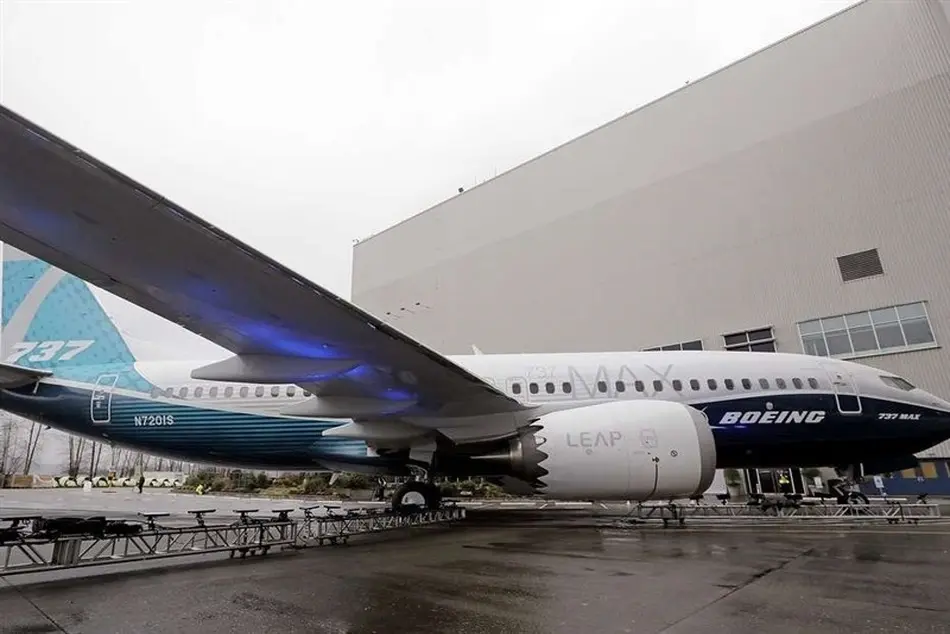Production-Rate Fluctuation Swells Spirit AeroSystems 737 Inventory
The monthly 737 program production rate mismatch between Boeing and Spirit AeroSystems has created a buffer of nearly 130 fuselages awaiting shipment from the supplier to the manufacturer, an Aviation Week analysis shows.

The monthly 737 program production rate mismatch between Boeing and Spirit AeroSystems has created a buffer of nearly 130 fuselages awaiting shipment from the supplier to the manufacturer, an Aviation Week analysis shows.
A satellite image of Spirit’s Wichita factory taken Aug. 7 showed 127 fuselages sitting where the company stores 737 inventory before shipment, just east of the plant that produces them. The stored inventory is equivalent to about five months of production at Boeing’s current rates.
Spirit’s monthly production rate started the year at 38 shipsets per month, aligned with Boeing’s plans to increase from 31 and stabilize at 38 in early 2024.
But fallout from the Jan. 5 Alaska Airlines 737-9 in-flight door plug loss forced Boeing to cut production. Output fell to an average of around 20 aircraft per month in the first quarter, data from Aero Analysis Partners/AIR (AAP/AIR) show.
Boeing is now back to about 25 per month and plans to be at 38—its agreed-upon maximum with the FAA for now—by year end. Spirit dropped its rate to 31 per month after the Alaska accident and plans to stay there through the end of the year.
The supplier delivered 71 737 shipsets to Boeing in the first half of 2024, including 27 in the second quarter. A delivered fuselage means it has been accepted by Boeing, not necessarily shipped.
Production quality improvement changes put in place starting March 1—part of the Alaska accident fallout—have slowed throughput at Spirit. Boeing now will not accept fuselages unless they pass a verification process meant to cut down on rework done on Boeing’s production line. As part of the change-over, Spirit ran 54 completed but undelivered fuselages through the verification process.
“While this dramatically reduced the number of clean fuselages coming from Spirit in the first few months, we have seen steady improvement ever since,” former Boeing CEO Dave Calhoun said on a July 31 earnings call. “The improvements in quality have significantly improved our Renton [production] flow times over that same period.”
The changes combined with Boeing’s production slowdown caused Spirit’s inventory to jump, satellite images show. Spirit’s 737 fuselage inventory, already swelling as Boeing worked to ramp up to 38 737s per month and match its supply chain’s pace, was 83 on Feb. 29. On April 30, it was at 129 fuselages.
Boeing’s 737 production averaged about 29 aircraft per month in 2023, AAP/AIR data show. The company announced in mid-2023 that it was transitioning from 31 per month to 38 per month. But it has reached 38 monthly rollouts just once since, in June 2023, AAP/AIR shows. Boeing’s official rates reflect supply chain shipping pace, not necessarily the number of monthly rollouts.
Spirit’s fuselage inventory will help the supplier support Boeing’s planned rate ramp-up without having to increase its own output immediately.
“You might think of that ship-in-place as a buffer that will allow Boeing to increase to 38 per month when the time is appropriate based on their work with the FAA,” Spirit CEO Pat Shanahan said on a May earnings call. “I kind of think of that buffer as surge capacity.
Based on the volume that’s there, it positions us then to respond should the rate go higher.”



